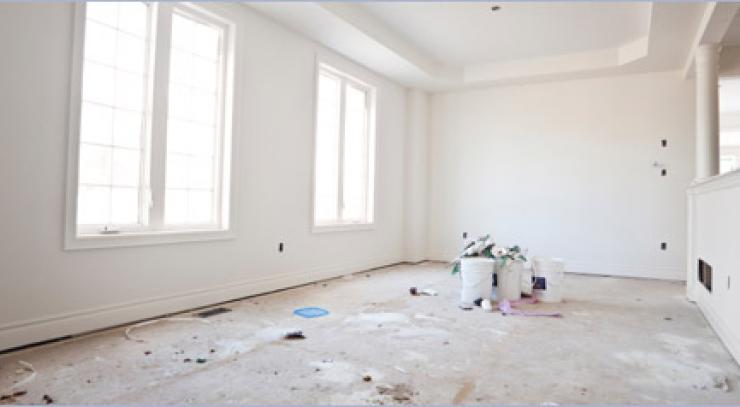Embroidery digitizing is a fascinating blend of art and technology, where digital images are transformed into beautiful, tangible designs on fabric. One of the most critical aspects of this process is selecting the right stitch types. The choice of stitches can significantly affect the outcome of your embroidery, influencing everything from texture to durability. This blog will delve into the various stitch types, their applications, and how they impact the conversion of images to embroidery files. We'll also explore how an embroidery file format converter is essential in this process and provide answers to frequently asked questions (FAQs).
The Basics of Embroidery Stitches
Embroidery stitches are the building blocks of any design. They determine the look and feel of the final product. Here are the primary stitch types commonly used in embroidery digitizing:
1. Satin Stitch
The satin stitch, also known as the column stitch, is one of the most popular types. It creates a smooth, glossy finish ideal for outlining and lettering. This stitch is best used for narrow and long areas of the design.
2. Fill Stitch
Fill stitches, also called tatami or flat stitches, are used to cover large areas. They provide a textured appearance and are great for backgrounds and solid shapes. The density and pattern of fill stitches can be adjusted to create different effects.
3. Running Stitch
Running stitches are simple lines of stitches and are typically used for outlining or creating fine details. They are also used for underlay stitches, which provide a foundation for other stitches.
4. Underlay Stitch
Underlay stitches are the unsung heroes of embroidery. They are stitched first to stabilize the fabric and provide a foundation for the top stitches. There are several types of underlay stitches, including edge run, center walk, and zigzag.
5. Triple Stitch
Triple stitches are similar to running stitches but are stitched three times in the same place for added durability and definition. They are often used for outlining and detailing where extra emphasis is needed.
6. Appliqué Stitch
Appliqué stitches are used to attach pieces of fabric to the main embroidery fabric. This technique adds dimension and can save stitching time and thread.
7. 3D Puff Stitch
The 3D puff stitch creates a raised effect by adding foam under the stitches. This stitch type is popular for hats and logos where a three-dimensional look is desired.
8. Cross Stitch
Cross stitches are used to create a pixelated look, resembling traditional hand-embroidered cross-stitching. This stitch is less common in machine embroidery but can be used for specific design effects.
The Role of Stitch Types in Image to Embroidery Conversion
When convert image to embroidery file, the choice of stitch types plays a crucial role. Here’s how different stitches impact the process:
Texture and Appearance
Each stitch type gives a different texture and appearance to the embroidery. For example, satin stitches provide a smooth, shiny surface, while fill stitches offer a more textured look. The choice of stitch type should align with the desired final appearance of the design.
Detail and Clarity
Stitches like running and triple stitches are excellent for capturing fine details and outlines. In contrast, fill stitches are better suited for broader areas. Understanding which stitch type to use where ensures that the intricate details of the original image are preserved.
Durability and Wear
The type of stitch also affects the durability of the embroidery. For instance, triple stitches add strength to outlines and detailed areas, making them more resistant to wear and tear. Similarly, underlay stitches stabilize the fabric and prevent puckering.
Fabric Type
Different fabrics require different stitch types. For instance, delicate fabrics might need lighter stitch densities to avoid damage, while thicker fabrics can handle more substantial stitches. Knowing your fabric is crucial when choosing stitch types for image conversion.
Embroidery File Format
The final step in image to embroidery conversion involves saving the design in a specific embroidery file format. This is where an embroidery file format converter comes into play. It ensures that the design is compatible with the embroidery machine being used.
Embroidery File Format Converter: An Essential Tool
An embroidery file format converter is software that translates a digitized embroidery design into various formats that embroidery machines can read. Common formats include DST, PES, JEF, and EXP. Here’s why this tool is essential:
Compatibility
Different embroidery machines support different file formats. A file format converter ensures that your design can be used on various machines, making it versatile and accessible.
Quality Preservation
A good converter maintains the quality of the design during the conversion process. It ensures that the stitch types, densities, and overall integrity of the design are preserved.
Flexibility
Using a file format converter allows you to switch between different machine brands and models without redesigning your work. This flexibility is crucial for businesses and hobbyists alike.
Step-by-Step Guide to Using Stitch Types in Image Conversion
Step 1: Choose the Right Image
Select an image that is clear, high-resolution, and suitable for embroidery. Simple designs with high contrast work best.
Step 2: Digitize the Image
Use digitizing software to convert the image into a stitch file. During this process, assign the appropriate stitch types to different parts of the design. For example, use satin stitches for borders and text, fill stitches for large areas, and running stitches for fine details.
Step 3: Adjust Stitch Density
Ensure the stitch density is appropriate for the fabric and design. Too dense, and the fabric may pucker; too sparse, and the design may appear unfinished.
Step 4: Use Underlay Stitches
Add underlay stitches to stabilize the fabric and provide a good foundation for the top stitches. This step is crucial for achieving a professional finish.
Step 5: Convert the File
Use an embroidery file format converter to save the design in the correct format for your embroidery machine. Test the file on your machine to ensure it reads and stitches correctly.
Troubleshooting Common Issues
Uneven Stitches
- Cause: Incorrect tension or stitch density.
- Solution: Adjust the machine tension and check the digitizing settings.
Fabric Puckering
- Cause: Too dense stitches or lack of proper stabilization.
- Solution: Reduce stitch density and use the correct stabilizer.
Thread Breakage
- Cause: Poor-quality thread or incorrect machine settings.
- Solution: Use high-quality threads and adjust the machine’s tension settings.
Misalignment
- Cause: Improper hooping or fabric movement.
- Solution: Ensure the fabric is hooped tightly and stabilized correctly.
Color Mismatch
- Cause: Incorrect thread color selection or machine calibration.
- Solution: Double-check thread colors and calibrate the machine.
Conclusion
Understanding the different stitch types and their roles is crucial for successful image to embroidery conversion. By selecting the appropriate stitches and using an embroidery file format converter, you can create beautiful, high-quality embroidery designs. Whether you are a beginner or an experienced embroiderer, these insights will help you achieve the best possible results in your projects. Happy stitching!
FAQs
1. What is the most common stitch type used in embroidery? The satin stitch is one of the most common types due to its smooth, glossy finish, making it ideal for borders and lettering.
2. Why are underlay stitches important? Underlay stitches stabilize the fabric and provide a foundation for top stitches, preventing distortion and ensuring a clean finish.
3. Can I use any image for embroidery conversion? Not all images are suitable. Simple, high-contrast images with clear outlines work best. Detailed images may require significant simplification.
4. How do I choose the right embroidery file format? The format depends on your embroidery machine. Common formats include DST, PES, JEF, and EXP. Use an embroidery file format converter to save your design in the required format.
5. Why do my stitches look uneven? Uneven stitches can result from incorrect machine tension, improper hooping, or digitizing errors. Adjust tension, ensure proper hooping, and review your digitizing settings.
6. What causes fabric puckering? Puckering is often due to too dense stitches or insufficient stabilization. Reduce stitch density and use appropriate stabilizers.
7. How can I prevent thread breakage? Use high-quality threads, adjust machine tension, and ensure the design’s stitch density is not too high.
8. What is a 3D puff stitch? A 3D puff stitch involves adding foam under the stitches to create a raised, three-dimensional effect, commonly used for caps and logos.
9. Can I convert my embroidery file for different machines? Yes, use an embroidery file format converter to change the file format to match different machines’ requirements.
10. How do I ensure the colors in my embroidery match the original design? Use the color management tools in your digitizing software to accurately match thread colors and double-check thread color codes.





